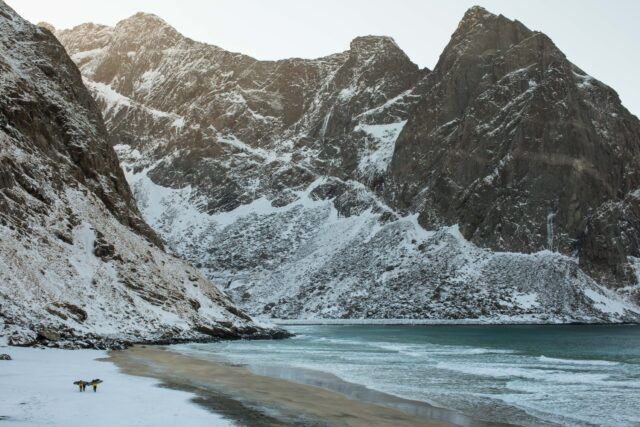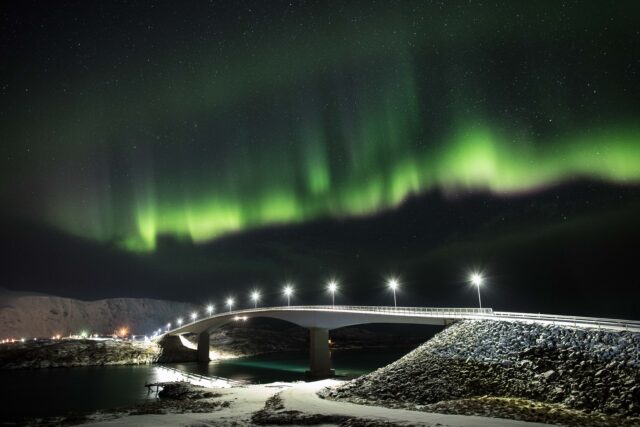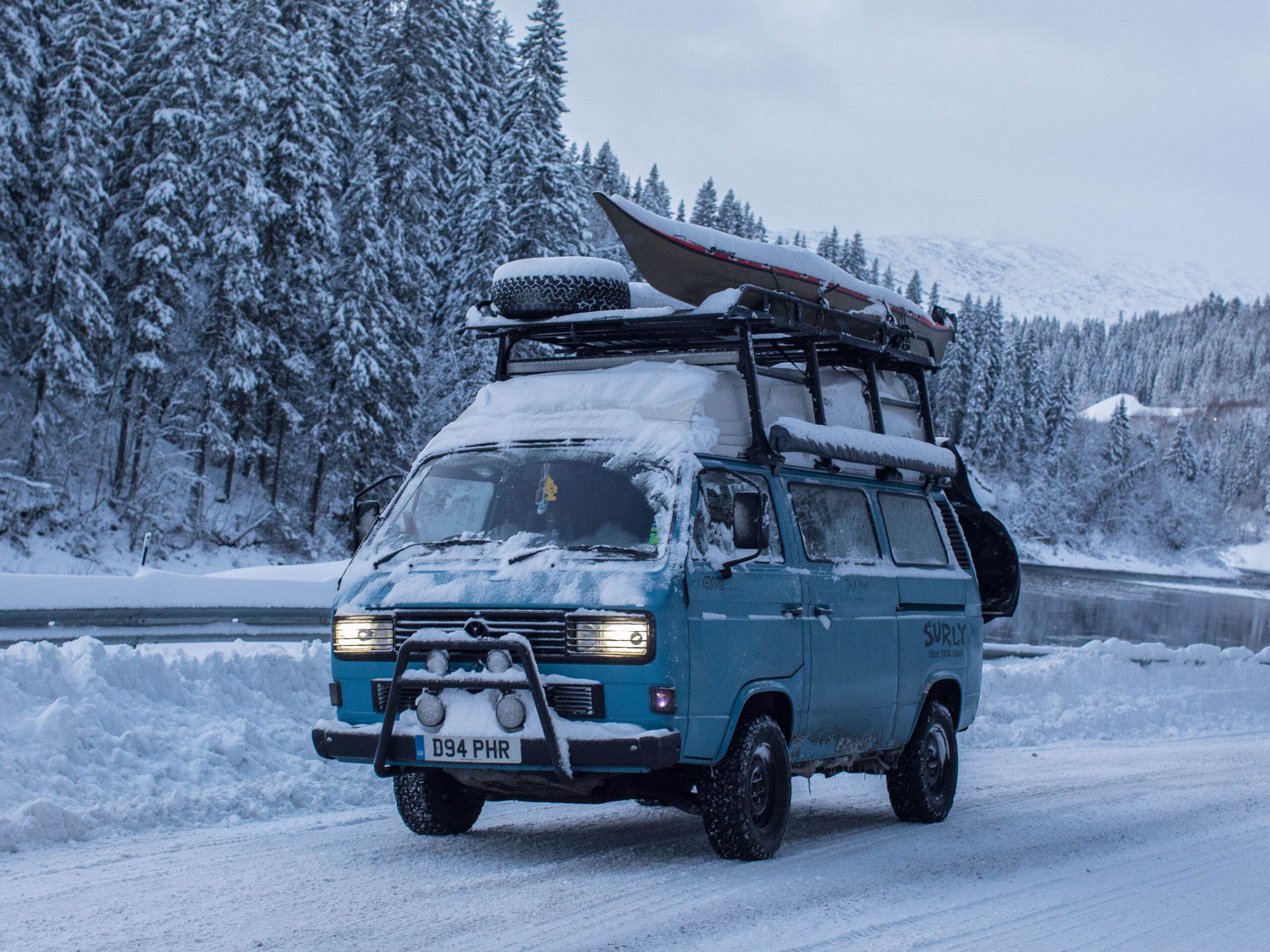“The Arctic Circle during wintertime…hah…you know there’s a reason why they call them a MOTfalia*. I wouldn’t drive that to the shops, let alone to Lofoten in January.” – a fellow Vanagon owner on Facebook, offering words of encouragement.
*MOT in the UK stands for “Ministry of Transport” and is a compulsory annual inspection to check whether a vehicle is safe for the roads. Westfalia is a company best associated with premium Vanagon camper conversions, hence the play on words.
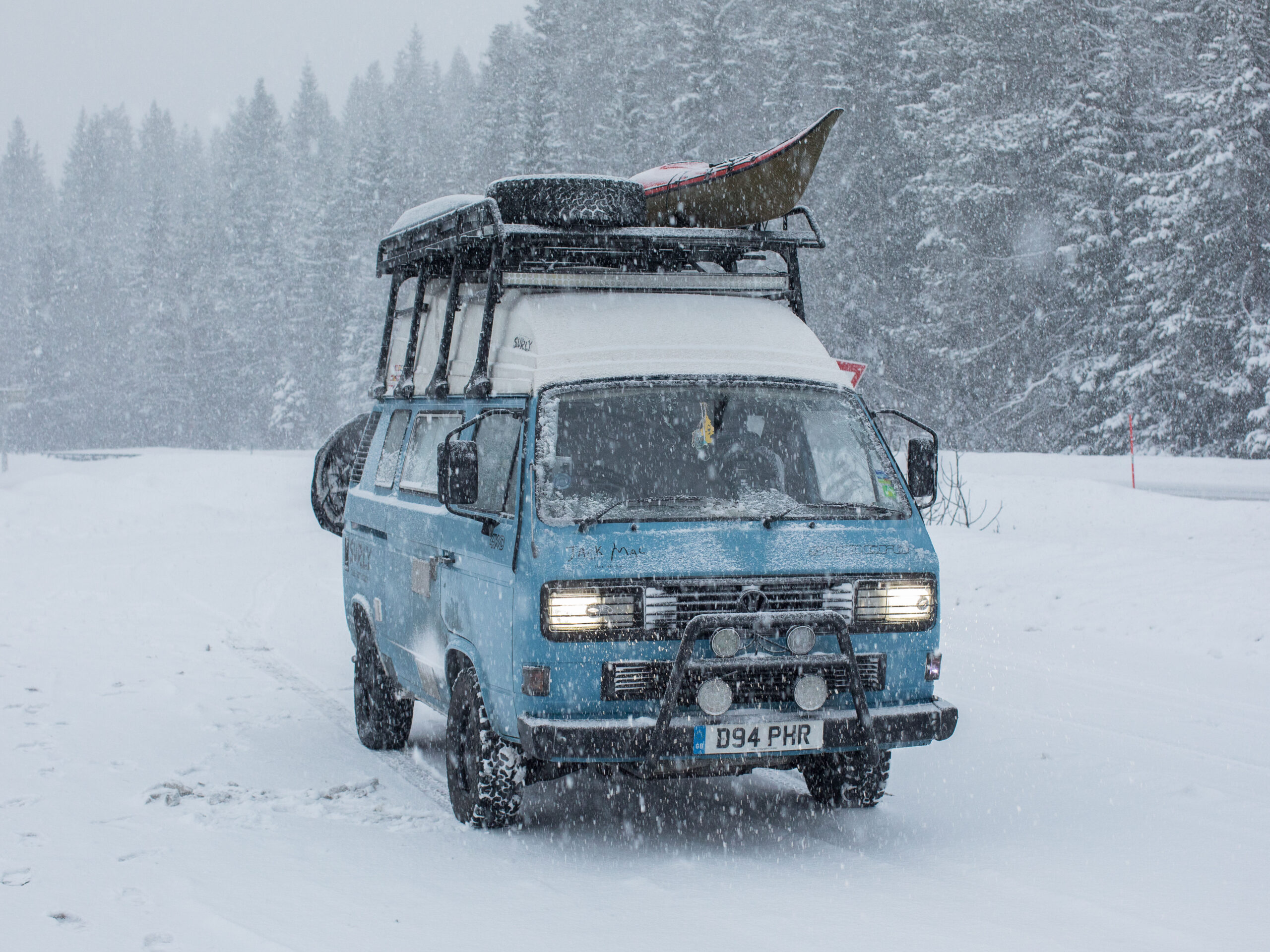
Well, guess what, faceless forum member, my van isn’t even a Westfalia. In fact, it was originally one of the much less desirable lowest-specification panel vans. I’d hoped for a better comeback. The truth is the Vanagon Syncro doesn’t quite have the same reputation within the overlanding community as something like a Land Cruiser. The latter is a byword for bombproof reliability, whilst the Syncro is more synonymous with AAA Recovery. The Vanagon is for people who care more about the journey than ever successfully reaching their destination, which is a shame, considering most don’t leave the driveway. Jokes aside, this reputation isn’t warranted. I mean, sure, the WBX engines are underpowered, gearboxes are somewhat fragile, brakes are poor, the steering lacks feel, handling is a little mysterious (like the Loch Ness monster, I’m not sure it exists), body rot’s an issue and, oh wait, this isn’t helping.
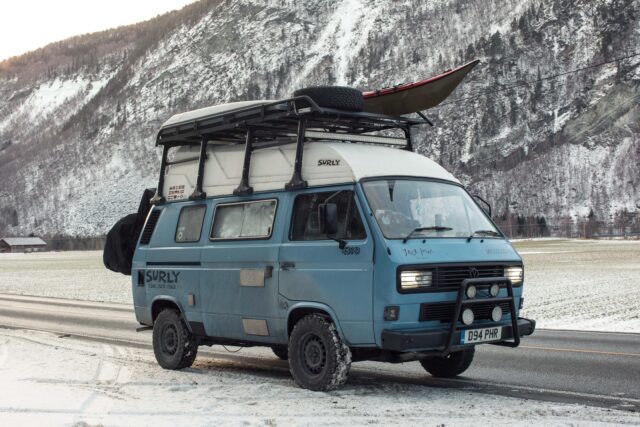
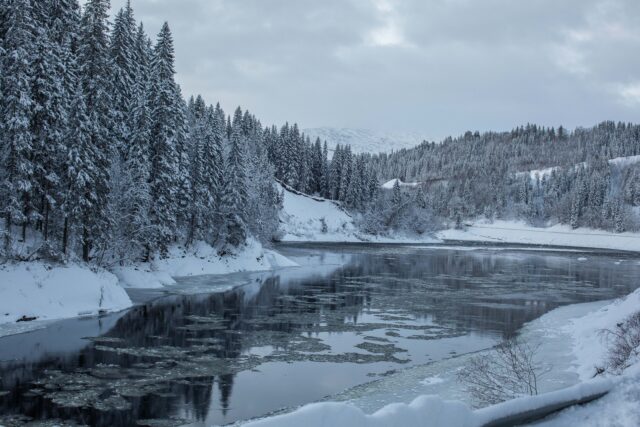
Truth is, these vans, more than most, suffer from Past Owner Syndrome. In other words, many Vanagon issues exist due to mistreatment in the past. A Land Cruiser, or similar vehicle, is often an intentional purchase, chosen by people for its dependable reputation. Consequently, they’re generally expected to be a daily workhorse or dedicated expedition vehicle and are upkept accordingly. Alternatively, the Vanagon is traditionally a recreational and often secondary vehicle for weekends away, which is frequently a bi-word for “maintained on a budget.” However, with the eruption of vanlife on social media, people have gravitated towards these four-wheeled-relics with an eye for aesthetic, open roads, surfing, and brand deals, without a second thought about the mechanicals. These poor old vans transitioned from staggered retirement to huge road trips (often overloaded) with nothing but the promise of getting the “shot.” Unfortunately, this was commonly the iconic “I’ve officially joined the Vanagon Club” photo on the back of a recovery truck. As a result, Vanagon breakdowns became prolific on social media, and their notoriety for poor reliability grew exponentially. I’m not here to preach. I’m no mechanic, and who doesn’t want to jump in a classic VW and hit the open road. Unfortunately, any 30-year-old van is going to require new parts, thorough servicing, regular preventative maintenance, and realistic expectations.
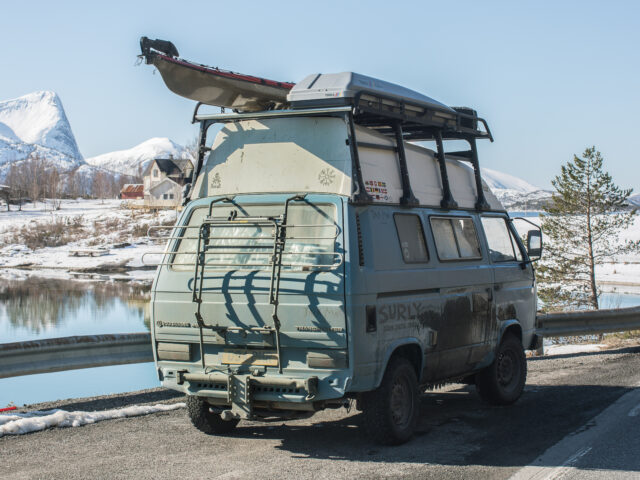
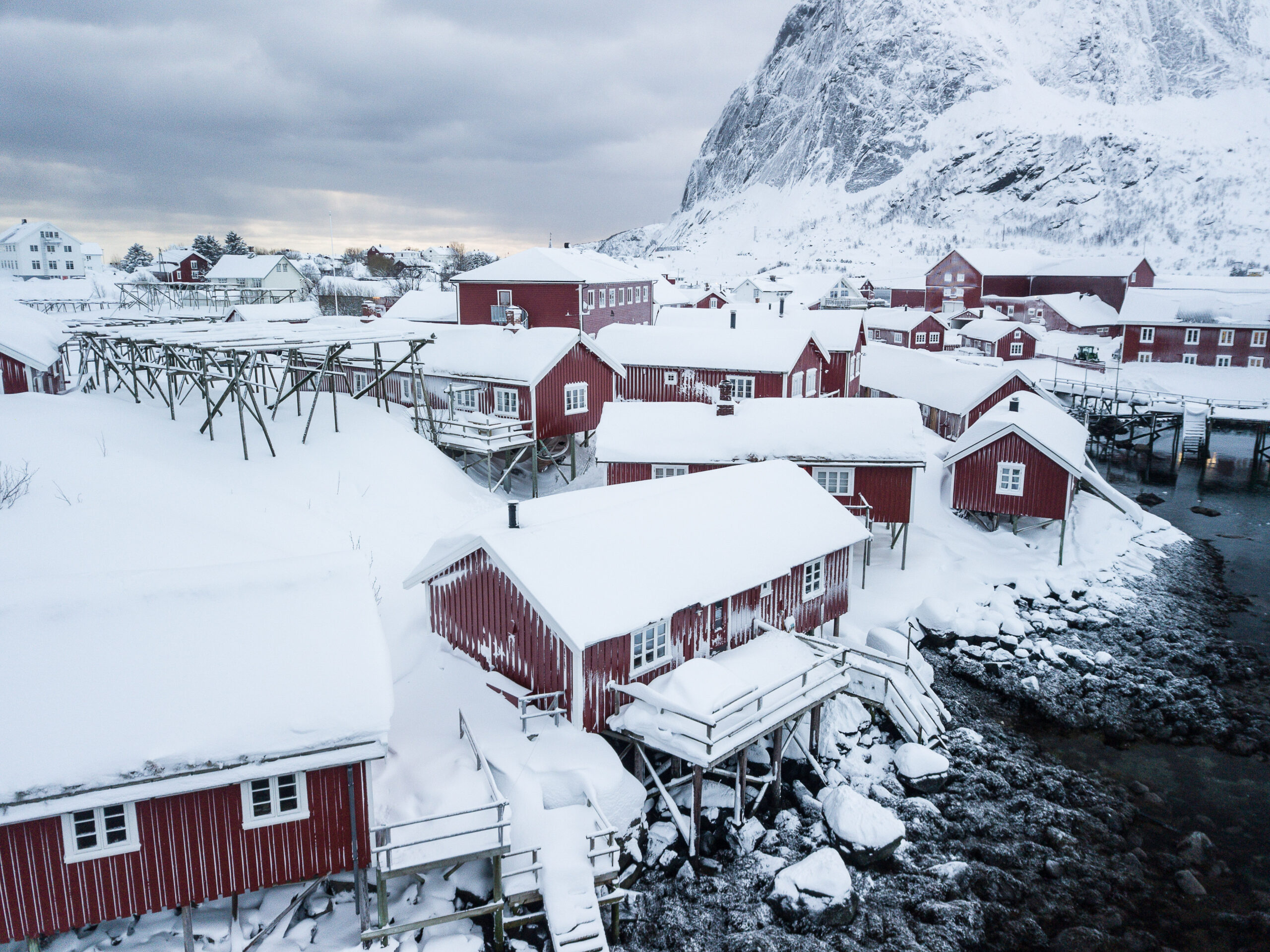
I knew what I was getting into (sort of), and from day one, invested every penny into mechanicals and servicing. If that meant living in the van with fewer amenities than Gollum’s cave, then so be it. If it was broken, I fixed it. Old parts likely to fail were replaced, infamous model-specific weaknesses were upgraded, and slowly, I descended into a financial debt deeper than Atlantis (in all seriousness, the cost of running a Syncro can be eyewatering). However, and this is the take-home point, in my six years of ownership, covering 20,000 to 30,000 miles annually, I’ve broken down once. I’d not think twice about jumping into this van tomorrow and driving it to Mongolia (and that’s either a testament to the Syncro or a reflection of my dwindling sanity.)
It’s worth pointing out that this was not my first trip to Lofoten; I’d made the journey the year previous during the summertime. However, the Arctic Circle during wintertime is a very different animal, with temperatures often dropping to -22° Fahrenheit (-30° Celsius) or lower. I had been offered a job in northern Norway, and regardless of the online naysayers, I was determined to make it happen. There are many “experts” online who have excellent mechanical knowledge but limited real-world travel experience. It’s important to identify this and get feedback from actual travellers who’ve experienced the journey or similar. It’s also easier to point out all the things that could go wrong than to take the time to list all the positives (which almost always outstrip the former). I don’t think concerns over reliability should be discredited, but if you’re someone who meticulously invests in preventative maintenance, then you should also learn to trust your vehicle. If you’d like to know more about my Syncro and the steps I’ve taken to make it overland ready, then check out “The Apocatron – 1986 Volkswagen T3 Syncro.”
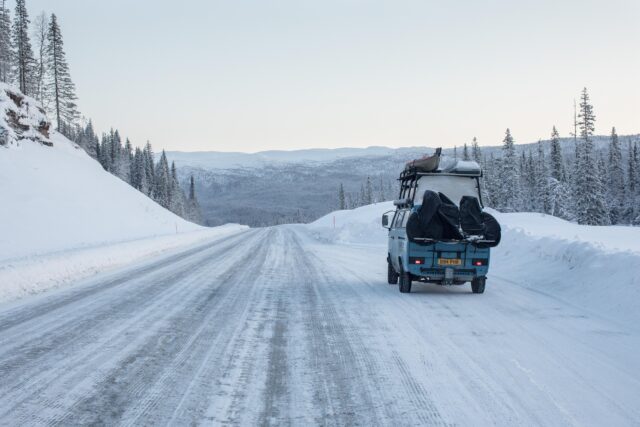
Nevertheless, I wasn’t going to take any chances. I started with a thorough service, which included swapping to a lighter viscosity oil (better suited to sub-zero temperatures), replaced the coolant with 100% G12 (to prevent freezing), changed the spark plugs, HT leads, rotor arm, air filter, battery, and a number of additional serviceable parts. Preventative maintenance is not simply changing what’s broken but considering old components that are likely to fail soon. It’s always cheaper and more convenient to do these jobs in advance of a journey than when it fails at the side of the road.
One of the biggest upgrades I made ahead of the trip was fitting an Eberspacher B1 heater, which hurt financially, but was essential. I’d previously used a Propex gas heater, but the pipes occasionally froze during wintertime, and it meant carrying an additional bottle of gas, which isn’t ideal when space is at a premium. If there’s fuel in the tank, then the B1 ensures I have reliable heating, and that’s a game-changer. Lastly, I booked check-ups with two of my favourite local garages to ensure there wasn’t anything I’d overlooked (after all, what’s better than one inspection—well, two).
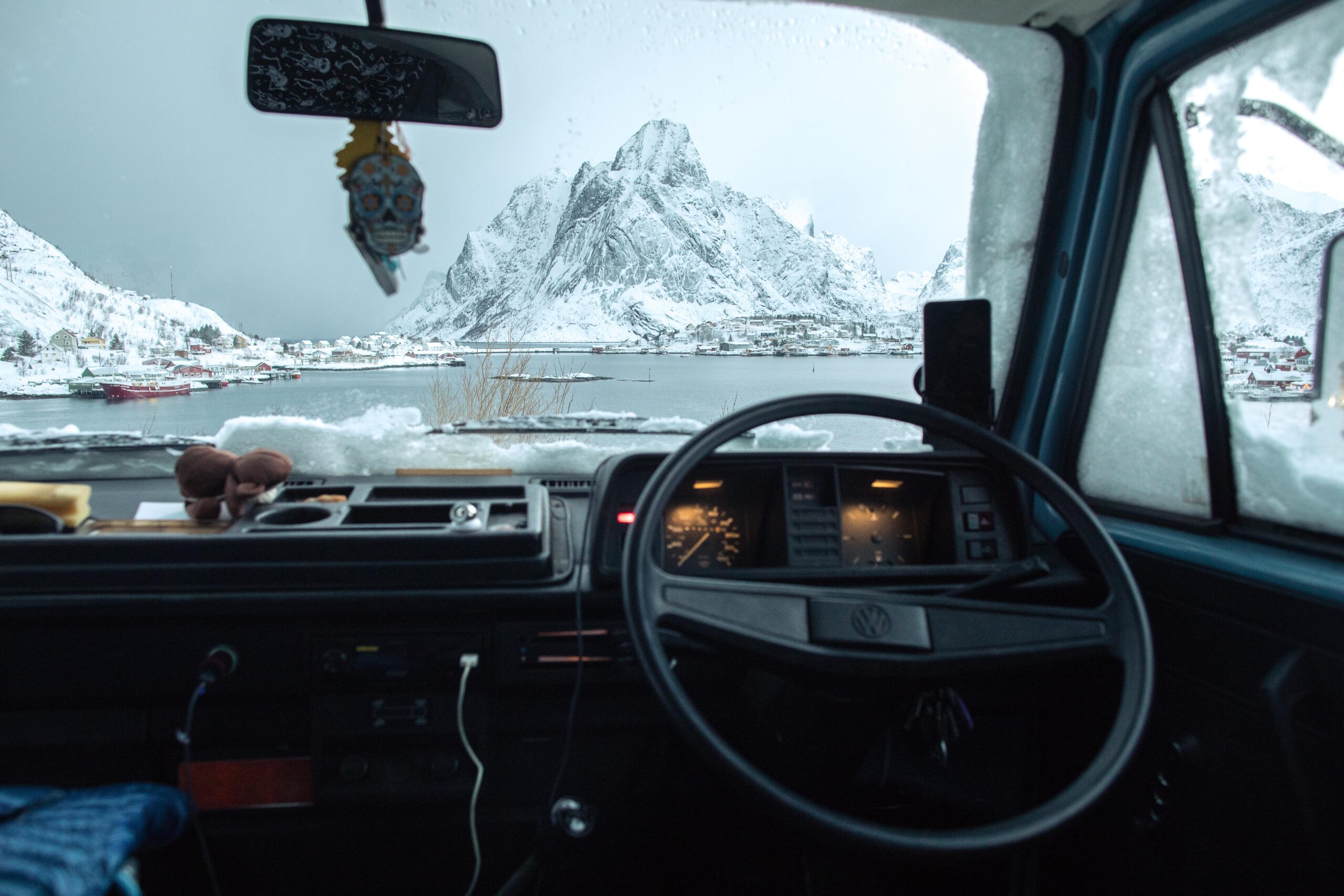
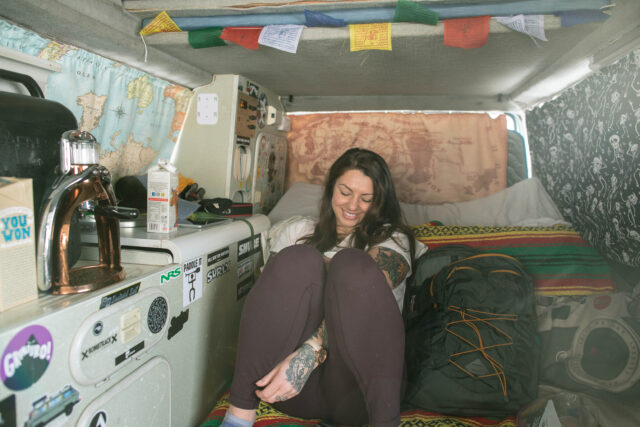
The drive through the first six countries was uneventful (I’ve come to loathe the dreary highways of Northern Europe), but entering Norway, the weather changed drastically, as did the road conditions. The extreme drop in temperature was followed by news that Norway was about to experience the worst winter storm in 30 years—perfect timing. Once you reach Oslo, there’s also the false sense of security that you’re now on the “home run,” when in fact Norway is about the same distance from South to North (870 miles/1,400 kilometres), as crossing the other six countries combined (994 miles/1,600 kilometres). However, in reality, it’s much farther because north of Oslo, dry tarmac becomes seldom, and snow/ice roads make for slow progress.
I spent my first night in Norway at a truck stop, an hour north of Oslo, and temperatures dropped to -4°F (-20°C). It was the first opportunity to really test the Eberspacher, and it was a surreal feeling being able to comfortably cook dinner in a pair of shorts whilst a snowstorm battered the van. That evening, I went to bed painfully aware that the following morning would be the coldest start I’d ever attempted in the Syncro. I feared that a non-start would indicate the van wasn’t up to the challenge that lay ahead, particularly as I knew temperatures would only drop from this point on. I distinctly recall sitting in the driver’s seat the following morning, key in the ignition, but nervous to turn it. I finally plucked up the courage after whispering sweet nothings into the van’s dashboard, and without hesitation, the WBX engine burst into life. I felt such a wave of relief and was overcome by newfound confidence in the journey.
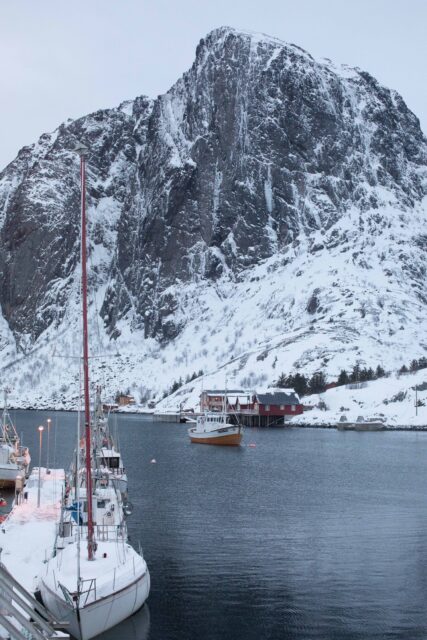
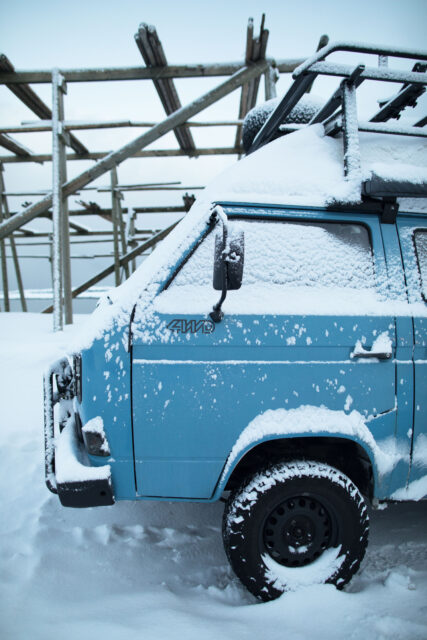
As I made my way farther north, the days became progressively shorter. It was a strange feeling transitioning from over eight hours of daylight to just three in less than a week. Hence, it was increasingly pertinent to plan each day carefully to avoid driving on mountain roads at night and to make sure I finished up at a suitable park-up. Gas stations in Norway often have free overnight parking, which was convenient as many also have decent facilities and a good range of vehicle parts). I was running BFGoodrich All-Terrain KO2s, and I was impressed. Sure, Nokians, alongside other winter-specific tires, are superior, but considering these same tires had successfully navigated tarmac, gravel, mud, and sand, it was a real testament to their all-round performance.
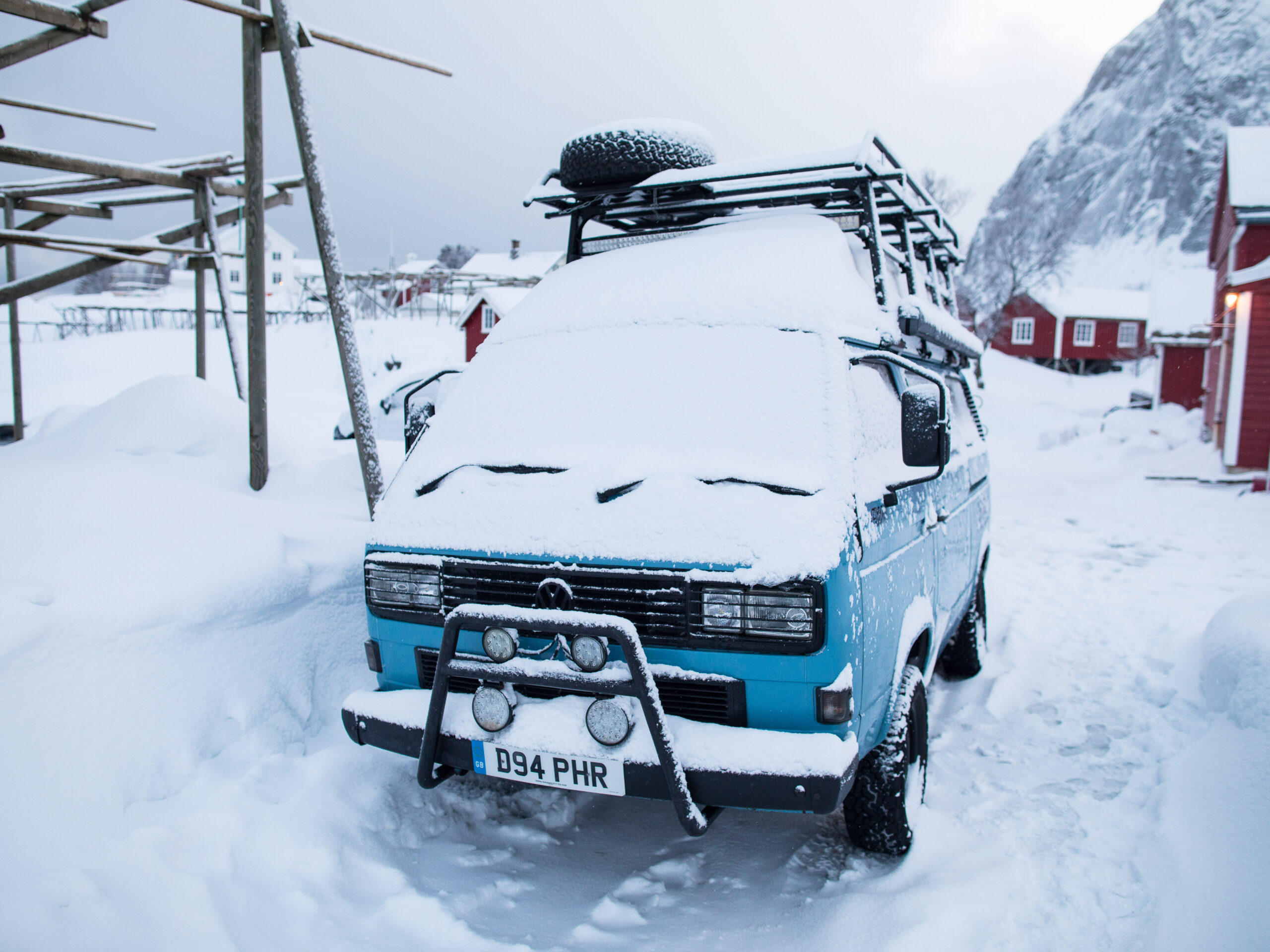
Nonetheless, I had a few tail-happy moments, and speed was largely restricted to below 40 mph, whilst locals overtook me at what I can only assume was the speed of light. I reached the iconic Arctic Circle centre in Saltfjellet but didn’t stay for long as temperatures dipped below -13°F (-25°C), and I didn’t fancy navigating the steep mountain descent in darkness. I slept overnight at another truck stop before hitting the road early and completing the final 90 miles to the Bodo Ferry terminal. The four-hour crossing was relatively painless, and just like that, I arrived in Lofoten.
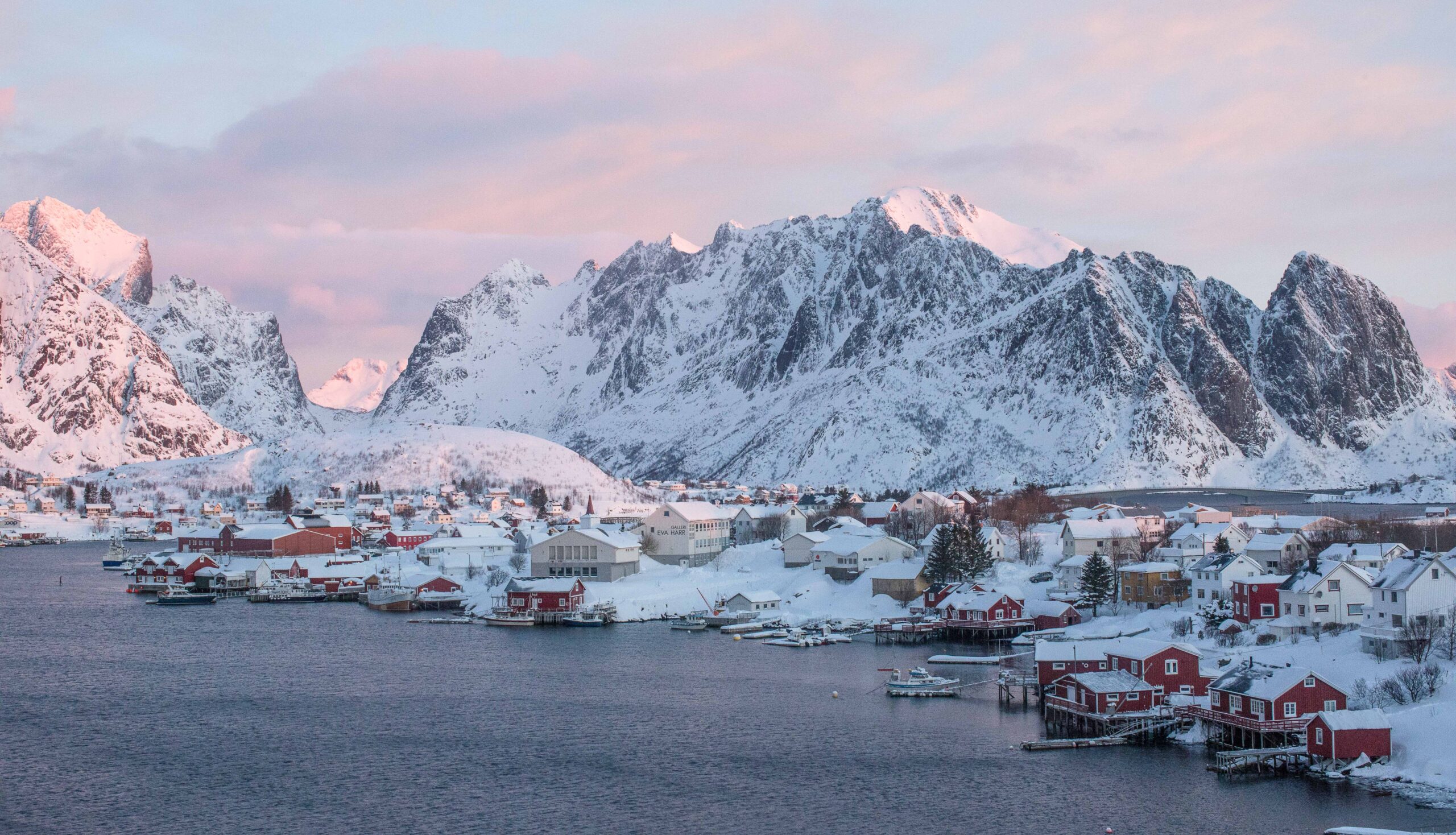
Reine, arguably the gem in Lofoten’s crown, would become my headquarters for the next 10 months of photography, mountaineering, bikepacking, and kayaking. The sense of achievement as I rolled into town that day was overwhelming; we’d made it 2,100 miles (3,379 kilometres). I pulled up, turned off the engine, and thanked the Syncro out loud for getting me there safely. This trip was a huge gamble, and failing to reach my destination would’ve been so much more than an inconvenience. I’d spent months prior figuring out the logistics of living/working in the Arctic Circle, invested the majority of my savings into the van, and turning back would’ve been a total disaster. There’s a tendency online to assume people living a life of adventure must have a wealthy background or access to some sort of trust fund, when a lot of travellers, including myself, are often making these things happen by the seat-of-their-pants. I invest so hard in the van because I depend on its reliability for work, and it’s often a rough deal when you’re spending more on vehicle maintenance than you earn. However, life has taught me time and time again that if you work hard and invest in your passions, things tend to work out. Reaching Lofoten kickstarted the next chapter in my journey, and once again, the Syncro had proved to be a worthwhile investment.

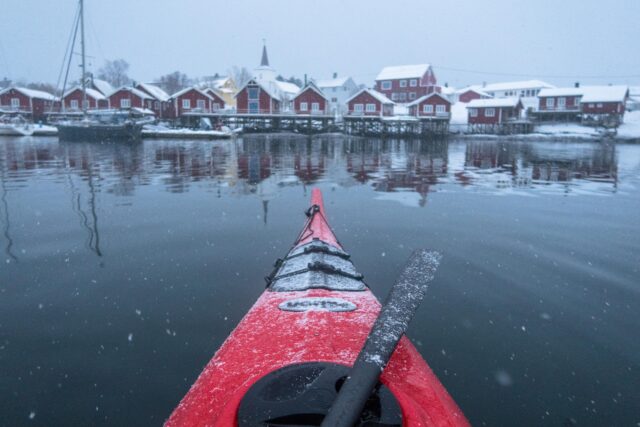
I often get asked why I put up with this van? Hell, I ask myself most days. There’s something about the imperfections, the sense of will it get me there, that creates such a bond between you and the vehicle. It makes the lows truly brutal but the highs immeasurable. A classic vehicle, for good or bad, is a more visceral experience. There’s this sense on big adventures that we’re both out of our comfort zone, figuring it out, dependent on one another. It’s about empathy, compromise, give-and-take; it’s a legit long-term relationship (just without the mechanophilia, and if you don’t know what that is, then best not look it up).
The Vanagon Syncro, dismissed by many as a liability, had demonstrated that with preventative maintenance, thorough servicing, and sympathetic treatment, it could take me just about anywhere. I feel that, like the Vanagon, many of us are guilty of dismissing our potential and ambitions. Pursuing your dreams takes time, and whilst we all have the raw materials, it often requires investing in yourself to bring everything together. So, be kind to oneself, don’t draw a comparison to others, allow the time to learn, fail, and improve—because the best destinations in life are never easy to reach but always worthwhile.
